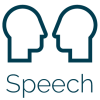
The Amplitude approach
At Amplitude we have developed a personalised approach that comes from 15 years of experience in clinical audiology, scientific research and music production. Our aim is to protect and optimise our client’s hearing for a lifetime, so we provide tailored advice that suits each lifestyle, taking into account clinical test results. We apply the highest technical standards with a caring manner to build relationships and achieve great results.
Helping people to feel the joy of social connection is central to our mission. The vast range of acoustic situations experienced by hearing aid users means that effective hearing aid fitting really does require skill, knowledge and experience. Through our work in audiology and music, we have developed our own approach to selecting and tuning the best devices to suit specific individual needs. We balance the science and art of sound to get the best performance from modern hearing aid technology.
At Amplitude we support each hearing aid fitting with counselling and training to overcome the impact of hearing loss. Although hearing aid technology has developed to an impressive level, the full potential is only reached through ongoing care. We, therefore, provide monitoring of ear and hearing health, and hearing aid maintenance, which means peace-of-mind for our clients for the future.
Hearing Aid Features

Communication is central to our daily lives and important for our long-term cognitive and psychological well-being. Modern hearing aids incorporate digital processing features designed to maximise speech clarity. Depending on the level and type of hearing impairment, these features can significantly improve speech clarity, which reduces listening effort.
The act of listening is intimately associated with our emotions. Whether it’s a beautiful piece of music or an unwelcome noise, we naturally judge sounds based on a feeling. Modern hearing aids are more customisable than ever, which means they can be adjusted to individual preferences using client feedback and acoustic measurements in the clinic.
Improvements in microprocessor technology have led to more intelligent sound processing and smaller devices. Manufacturing processes and high quality materials make it possible for hearing aids to be discrete and ergonomic. Its now common to see people using wearable smart devices like watches and earphones. There has never been a better time to enjoy the benefits of hearing aids while looking great.
Advances in hearing aid shape, size and battery technology mean there are lots of ways to interact with a hearing aid. Everyone has unique needs and ergonomic preferences when it comes to handling and controlling hearing aid devices. Selecting the correct match for each client is an important part of our bespoke service.
Many of us now enjoy the benefits of wireless connectivity for hands-free phone calls and music playback. Now this connectivity is available in most models of hearing aid which means improved personalised control of hearing aids from a smartphone, in addition to audio streaming and binaural processing to improve noise reduction.
Types and Levels of Technology
At Amplitude we take pride in our ability to support people towards their goals using the technology that is right for them. This means making shared decisions about hearing aid selection. As an independent audiology service we have the freedom to partner with different manufacturers. We currently work with Oticon, Widex, GN Resound and Starkey who each offer products that we feel are the best in the world. There are many different hearing aid types including, but not limited to receiver-in-the-ear, behind-the-ear, in-the-ear and in-the-canal. We have 15 years of experience selecting the right type for each individual, always led by client needs and preference.
Each hearing aid manufacturer offers several levels of technology from basic to advanced. The technology levels influence the sound quality and capacity of the hearing aid for noise reduction. Although there is no industry standard for the features that are included at each level there are some broad themes. We have created three categories to stratify the devices to help clients choose what is right for their needs: Focus, Filter and Boost.
At Amplitude, we offer expert advice to our clients to guide their choice of hearing aids and aftercare. The hearing aids we call Focus have the most advanced processing to enhance speech and minimise unwanted noise. Hearing aid manufacturers have developed these flagship models aiming for the clearest speech and most natural sound quality. They also offer the most adjustability of the three levels, giving the audiologist the control to customise the settings to the client’s needs and preferences. The Filter category includes devices with a narrower list of advanced features, although still a great choice depending on client needs. The devices that we call Boost are the simplest in terms of sound processing. They provide the essential features of modern digital hearing aids to shape and amplify sound according an individual’s prescription. They have limited advanced processing such as noise reduction. An important point is that devices at each level are the same build-quality, shape and size. The choice depends on ones individual preferences and needs which are informed by the results of the clinical assessment.
